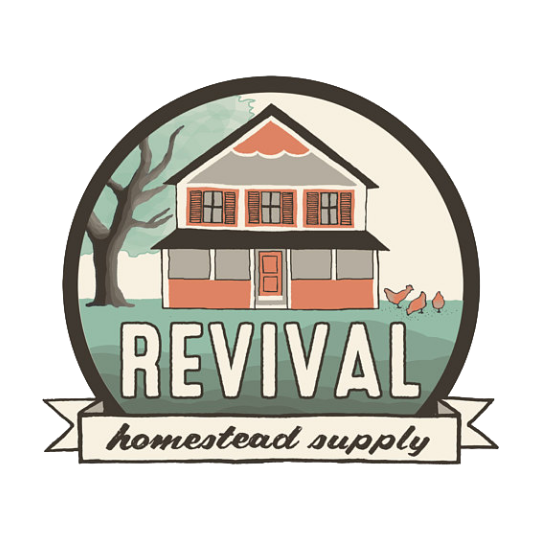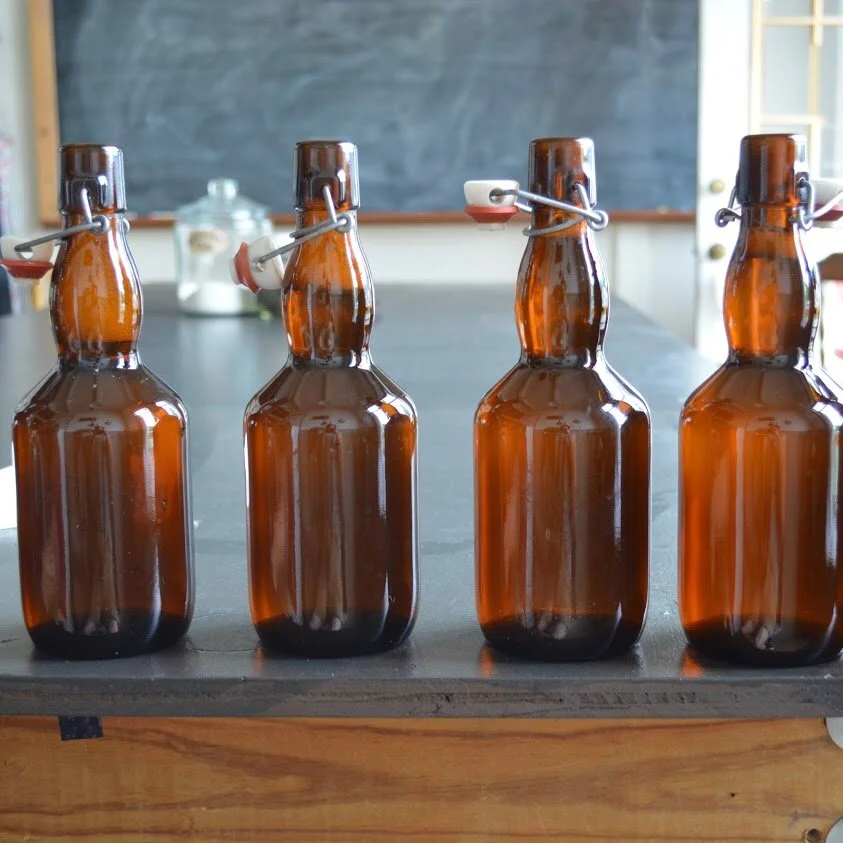Bottling Kombucha
Originally posted on 4 April 2019
Bottling is a completely optional part of the kombucha-making process. If you crave a strong fizz, bottling is for you! But if the light effervescence of kombucha straight from the tank satisfies you, I wouldn't recommend the extra effort.
WARNING: When bottling kombucha, contents become pressurized due to carbonation. Exploding bottles can cause bodily harm and property damage. Read on for more information about safe bottling techniques.
YOU WILL NEED:
airtight single serving bottles (we recommend the thick glass swing-top beer bottles, pictured)
funnel (unless your vessel has a spigot)
fine mesh strainer or cheesecloth (optional)
Depending on your particular SCOBY and how naturally bubbly it is brewing, your kombucha may be frustratingly flat, vigorously frothing, or anywhere in between. These instructions are a general guideline that I have found works well for me and my brew. If your kombucha is already very bubbly, some of these recommendations will be unnecessary (and potentially hazardous! Exploding bottles!)
1. Add 1/2 - 1 tsp. of sugar, 1 - 2 tsp simple syrup, or up to 1/2 c. of fruit juice to each pint-sized bottle to feed the yeast and encourage good carbonation.
2. Fill your bottles up to the narrow neck, leaving ~1" head space. The kombucha culture contains both yeasts and bacterias. The yeasts are anaerobic; they do not require oxygen to survive. The bacterias are aerobic; they do require oxygen to survive. The yeasts, and not the bacterias, are the carbonating agents. Reducing the amount of oxygen available inside your bottle by filling up to a narrow neck and leaving little headspace, will give you a better fizz.
3. Seal your bottles and set them aside at room temperature. Store them inside a cardboard box for safety, just in case one blows. Brew time depends on the temperature (typically 2 - 5 days). If your brew is pretty fizzy, burp your bottles once daily.
4. Refrigerate and enjoy!

